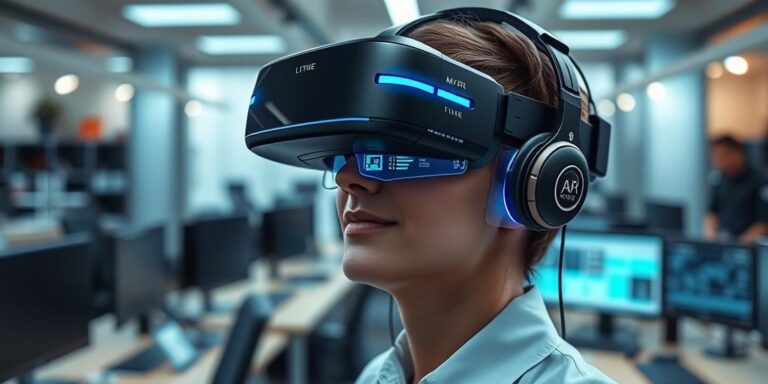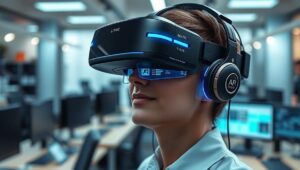Mixed Reality (MR) Headsets Blurring Physical and Digital (2025)
By 2025, mixed reality (MR) headsets are poised to revolutionize how we interact with the world, seamlessly blending the physical and digital realms. This article explores the advancements, applications, and implications of MR technology as it becomes increasingly integrated into our daily lives.
What is Mixed Reality?
Mixed Reality (MR) is a technology that combines elements of both augmented reality (AR) and virtual reality (VR). Unlike VR, which creates a completely digital environment, or AR, which overlays digital information onto the real world, MR integrates digital objects into the real world in a way that allows them to interact with it. This means digital objects can respond to real-world stimuli, and users can interact with both physical and virtual elements simultaneously.
Key Advancements Driving MR in 2025
Several key advancements are driving the proliferation of MR headsets:
- Enhanced Processing Power: Advances in chip technology are enabling MR headsets to process vast amounts of data in real-time, facilitating more complex and realistic interactions.
- Improved Sensor Technology: Better sensors, including depth sensors and cameras, allow MR headsets to accurately map and understand the surrounding environment.
- Advanced Display Technology: Higher resolution displays and wider fields of view are enhancing the visual fidelity of MR experiences, making them more immersive and comfortable.
- 5G Connectivity: The rollout of 5G networks is providing the high-bandwidth and low-latency connectivity required for seamless MR experiences, especially in mobile and outdoor environments.
Applications Across Industries
The potential applications of MR headsets are vast and span numerous industries:
- Healthcare: MR is transforming medical training, surgical planning, and patient care. Surgeons can use MR to visualize complex anatomical structures, while patients can benefit from MR-guided rehabilitation programs.
- Manufacturing: MR is enhancing productivity and efficiency on the factory floor. Workers can use MR headsets to access real-time instructions, collaborate with remote experts, and perform quality control tasks.
- Education: MR is creating immersive and interactive learning experiences. Students can explore historical sites, dissect virtual organisms, and conduct simulated experiments.
- Retail: MR is revolutionizing the shopping experience. Customers can use MR to virtually try on clothes, visualize furniture in their homes, and access product information.
- Entertainment: MR is blurring the lines between the physical and digital worlds in gaming and entertainment. Users can participate in immersive games, attend virtual concerts, and experience interactive storytelling.
Challenges and Considerations
Despite the immense potential of MR, several challenges need to be addressed:
- Cost: MR headsets remain relatively expensive, limiting their accessibility to consumers and businesses.
- Comfort and Ergonomics: Some users find MR headsets uncomfortable to wear for extended periods due to their weight and bulkiness.
- Privacy and Security: The collection and use of data by MR headsets raise privacy and security concerns.
- Content Development: The creation of compelling and engaging MR content requires specialized skills and tools.
The Future of Mixed Reality
As technology continues to advance and costs decrease, MR headsets are expected to become more ubiquitous in the coming years. By 2025, MR will likely be an integral part of our daily lives, transforming how we work, learn, play, and interact with the world around us. The blurring of physical and digital realities will open up new possibilities and experiences, reshaping industries and redefining the boundaries of human interaction.




